Publié le novembre 12 2024
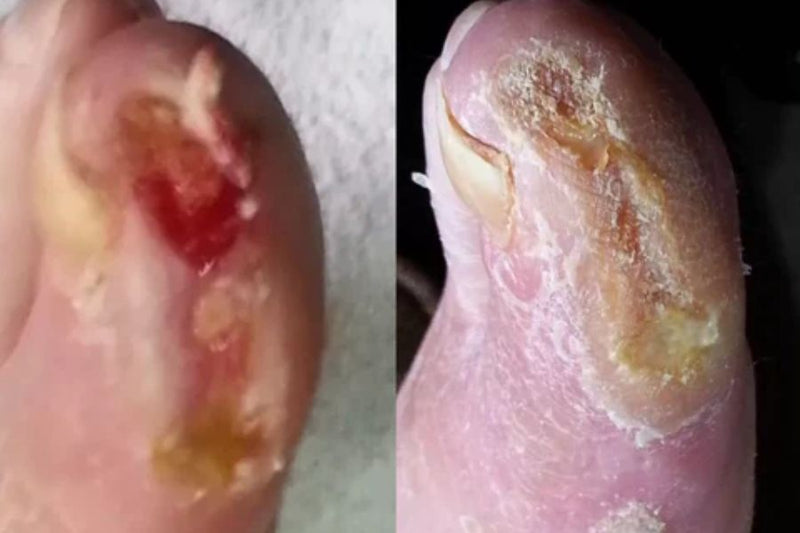
Étude réalisée :
Jonathan Rosenblum, vice-premier ministre.
Patient:
Homme diabétique de 84 ans.
Histoire:
Taux de sucre dans le sang non contrôlés. Le traitement standard des plaies était inefficace.
Présentation de la plaie :
Plaie d'épaisseur partielle sur la face médiale de l'hallux gauche avec des bords irréguliers.
Traitement antérieur :
Le patient avait déjà été traité à différents moments avec un gel de débridement enzymatique à base de collagénase, de la poudre de collagène, de l'algénate de calcium, de l'algénate d'argent, du miel médical, de l'hydrogel et une pommade antibiotique triple, parallèlement à un débridement en série et à un nettoyage des plaies.
Méthodologie de l'étude :
Utilisation quotidienne du produit pour les plaies à base d'Inula de Lavior.
Produit(s) utilisé(s) dans l'étude :
Soins des plaies diabétiques D-Care.
Durée de l'étude :
4 semaines – Étude de marqueurs prédictifs de 4 semaines.
Récit de traitement
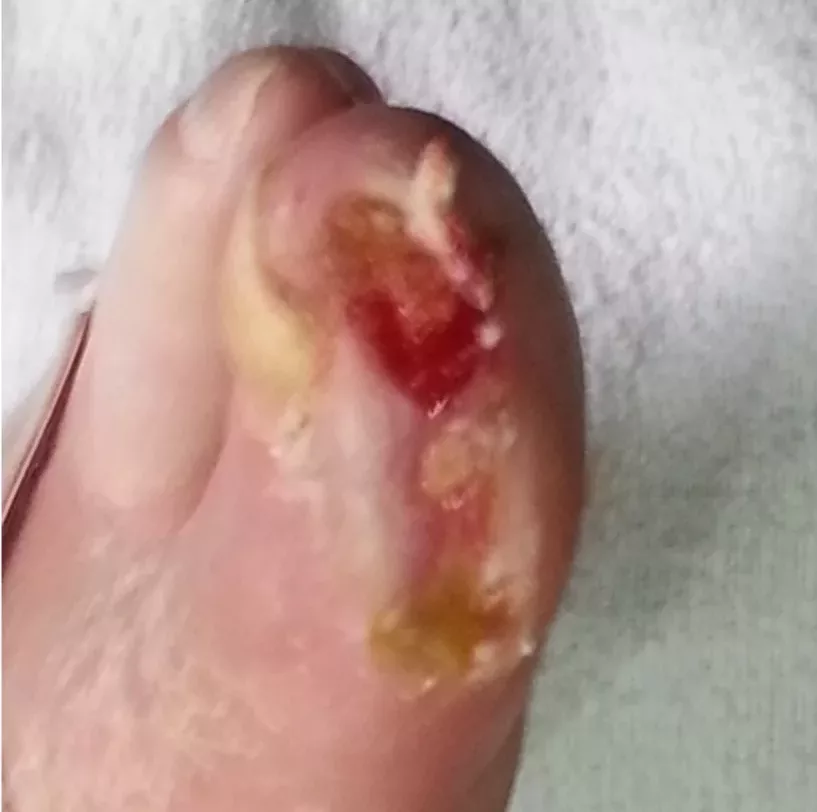
PRÉSENTATION INITIALE
Taille de la plaie : 4,5 cm. Plaie de stade 2. Tissu fibreux évident avec tissu de granulation malsain. Présence de biofilm dû à la chronicité de la plaie.
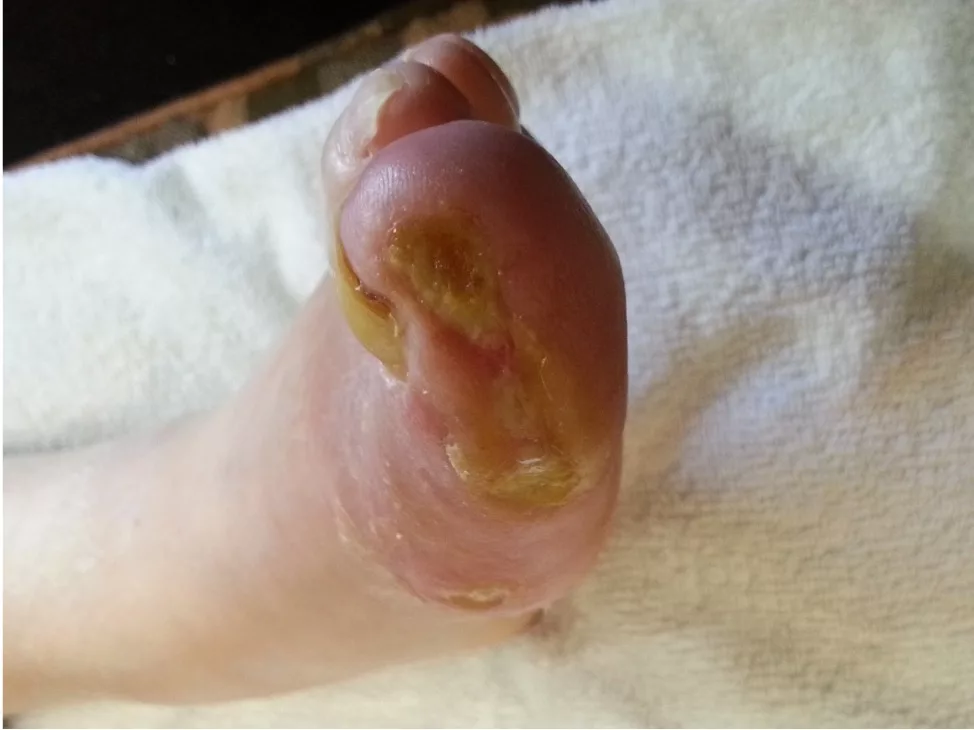
APRES 1 SEMAINE DE TRAITEMENT
La plaie diminue de taille et devient moins profonde. Les bords de la plaie prennent un aspect plus sec. L'inflammation diminue et la phase suivante de cicatrisation a commencé.
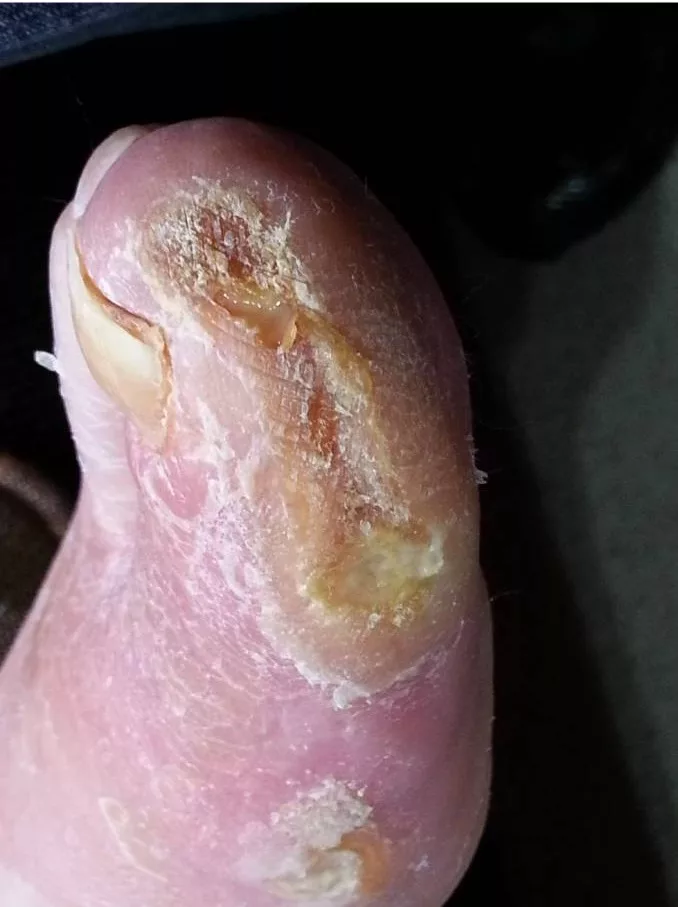
APRES 2 SEMAINES DE TRAITEMENT
Le biofilm a été perturbé et est désormais éradiqué. Des escarres se forment et la plaie continue de rétrécir. Les bords de la plaie se rapprochent de bout en bout.
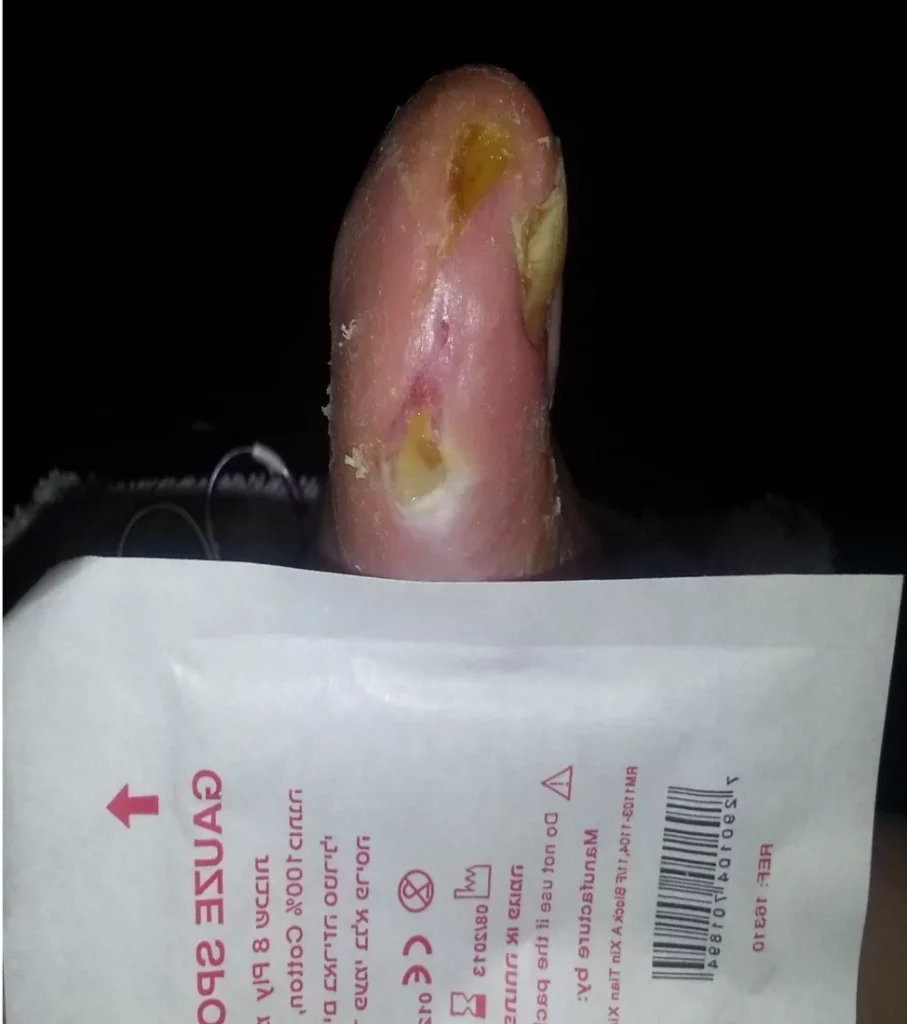
APRES 4 SEMAINES DE TRAITEMENT
Taille de la plaie : 0,75 cm.
La grande majorité de la plaie est fermée et le tissu épithélial est visible. La partie la plus proximale de la plaie est encore ouverte mais très peu profonde.
RÉSUMÉ DES RÉSULTATS
Au cours de cette période de 4 semaines, la fermeture de la plaie est à 83 %. Comme le montrent les photos, tout le tissu fibreux et le biofilm ont été transformés en granulation et en nouveau tissu épithélial.


